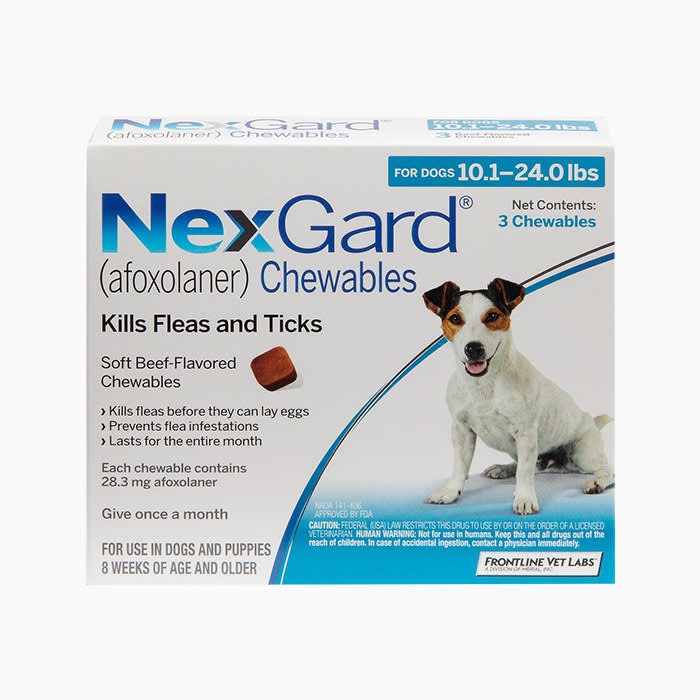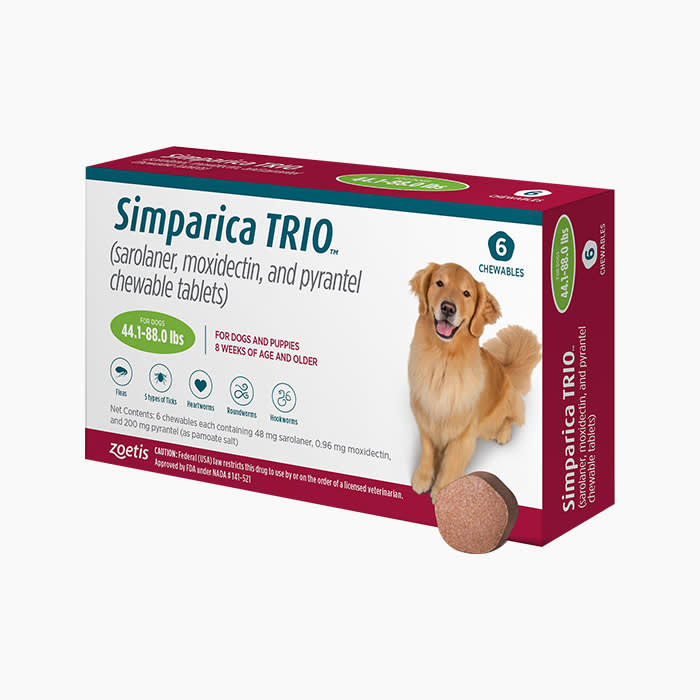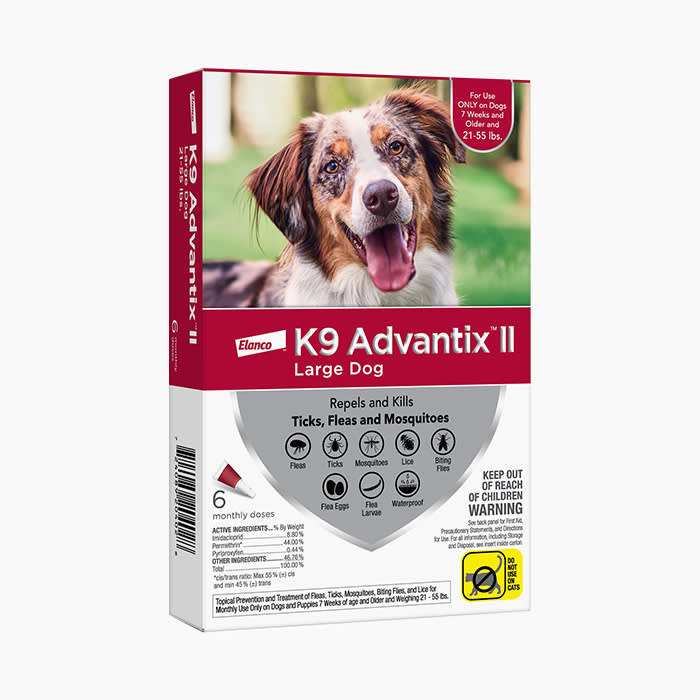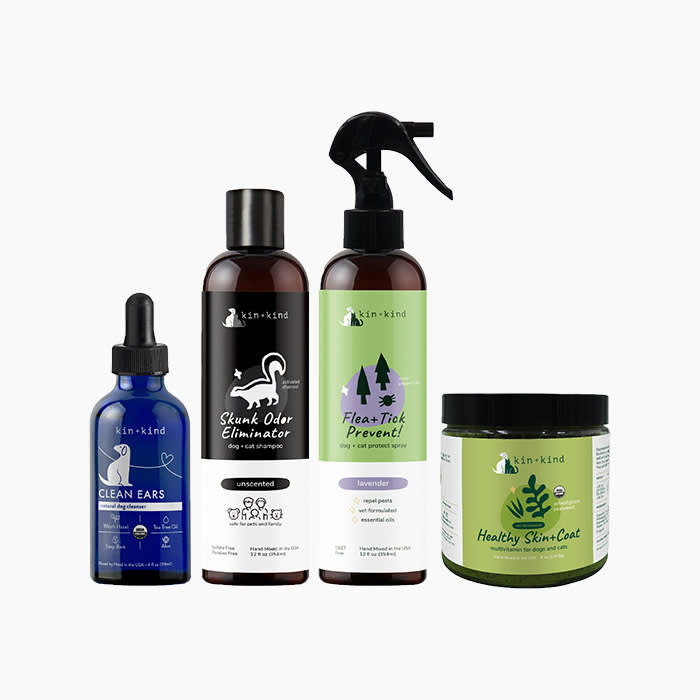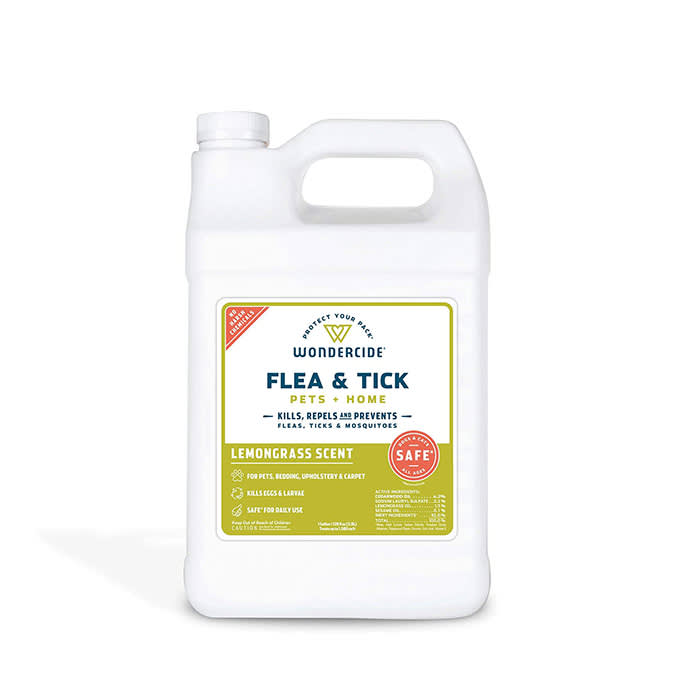How Did I Get a Flea Infestation? Causes and Prevention
Treatments to ward off transmission this spring and summer.

Share Article
In This Article:
Will One Flea Cause An Infestation? Can You See Fleas with the Naked Eye? What Causes a Flea Infestation? How To Tell How Bad a Flea Infestation Is How To Prevent Flea Infestations
Ah, spring. It’s a wonderful time of year filled with blooming flowers, longer days, and blood-sucking demon bugs the size of a sesame seed. Yup, it’s the start of flea and tick season — and personally, I am already over this boogeyman-bug horror show. Thankfully, there are more options than ever for combating these blood-thirsty pests and keeping both your pets and your human family safe.
“Tick control is important not just to take care of pets, but also to prevent establishing a transmission cycle where the pathogens can be transmitted to the humans in the household,” Dr. Maria Esteve-Gasent, an assistant professor at Texas A&M College of Veterinary Medicine & Biomedical Sciences, says.
A flea infestation can happen in what seems like the blink of an eye — and it’s up to you to eradicate these pests from your yard, your home, and your pet, and make sure they stay out. Read on to learn all about the causes of flea infestations and what you can do to prevent them.
Main takeaways
Because of their extremely rapid reproduction, a single flea can quickly lead to an infestation.
Fleas are just 1/8 inch long, making them difficult to spot.
Fleas can hitch a ride into your home on your pet and even on your clothing.
Itching is the most common symptom of a flea infestation, but more serious reactions are possible.
Flea and tick preventatives can help keep your pet safe from fleas.
How much do you spend on your pet per year?
Will one flea cause an infestation?
It’s happened to many pet parents — you’re casually petting your dog or cat, and you spot a tiny speck in their fur or on their skin. You hope it’s dirt, something picked up somewhere in the yard or house. But no, it’s a flea. And where there’s one flea, you’re likely to find more. Many more.
A single flea may not seem like a big deal. After all, these minuscule pests are incredibly common and easy to pick up anywhere outside. Can a few fleas cause an infestation?
Fleas breed rapidlyopens in new tab, and if you don’t quickly take action to eliminate the insects from your home and pet, you could quickly find yourself dealing with a full-blown infestation. And eliminating fleas goes beyond a simple treatment for your pet. If you notice a single flea, you need to treat your home and yardopens in new tab as well.
Can you see fleas with the naked eye?
Fleas are not easy to see, especially on a pet, where their brown or black color often blends in with fur. At just 1/8 of an inch longopens in new tab, an adult flea is hard to spot with the naked eye, and flea eggs, which are about the size of a single crystal of salt, are even harder to glimpse. Instead, you’re most likely to find small black or brown specks on or around your pet’s bedding. These spots are known as “flea dirt”opens in new tab and often resemble coffee grounds, but are actually (sorry) flea feces.
What causes a flea infestation?
A single flea quickly lays eggsopens in new tab in your pet’s fur, which can then fall off and end up anywhere your pet hangs out — on that fluffy pet bed, your sofa, and, yes, your bed if your pet sleeps with you. Most fleas live for only a few weeks, but fleas on a dog or cat can survive for 30 to 40 daysopens in new tab.
Even if your dog rarely spends time outdoors, they aren’t safe from fleas. These tiny insects can jump as high as a footopens in new tab (a huge distance for their size), making it easy for them to move from their spot in the grass to a host. Look out for signs of fleas in the house, such as black or brown spots on areas where your pet spends time (flea dirt) and tiny black or brown bugs on your pet’s fur.
Fleas are common pests and difficult to see, making it hard to stop an infestation before it starts. All it takes is a single flea laying eggs in your pet’s fur to create a frustrating situation that requires treating your pet, home, and yard to eliminate the insects.
How to tell how bad a flea infestation is
The most obvious sign of a flea infestation is your pet scratching more than usual. You may also see an irritated patch of skin on your pet, sometimes called a “hot spot,” that can result from flea bite dermatitis. You may also find flea dirt or eggs in other places around your home, such as on your dog’s bedding or on the furniture. If your dog sleeps on your bed, look out for fleas and flea eggs on bed sheets.
In minor cases, you’ll notice a flea infestation primarily on your pet. Your dog or cat may be scratching excessively, and their skin will likely be irritatedopens in new tab. Your pet may also be restless because the constant itching can lead to discomfort.
In serious cases, fleas can transmit disease to both your pet and humans in the home, including typhus. Fleas can also transmit tapeworms to your pet, which can lead to digestive problems and even weight loss. Some people and animals also have allergic reactionsopens in new tab to flea bites, resulting in more intense itching.
How to prevent flea infestations
Keeping your home and yard clean can help eliminate the presence of fleas. Make sure to mow regularly to remove places where fleas may reproduce and hide. And simply sweeping and vacuuming your homeopens in new tab frequently can reduce the number of flea larvae in your home by 30 percentopens in new tab and eliminate as much as 60 percent of flea eggs. You should also regularly wash bedding and any other fabric products that can be washed.
The best thing you can do to prevent a flea infestation is to regularly give your pet flea and tick preventativesopens in new tab. Even better, more products are coming to the market that utilize natural methods to stave off fleas and ticks; these chews, sprays, and treatments can give you some peace of mind about keeping your pup safe from both bugs and harsh chemicals. Ahead, discover our choices for the best flea and tick preventatives for dogs to keep your whole family safe during the warmer months.
Btw, our editors (and their pets) picked out these products. They’re always in stock at the time we publish, but there’s a chance they’ll sell out. If you do buy through our links, we may earn a commission. (We’ve got a lot of toys to buy over here, you know?)
Best oral chew
Best oral chew for large dogs
Best topical spot treatment
Best all-natural
Best spray
Even so, these products are the first line of defense in keeping you and your pet safe from a (blood) sucky springtime.
When to consult a vet or pest control expert
In most cases, a flea infestation can be controlled and eliminated without consulting a vet. However, if you notice your pet has other symptoms beyond scratching, such as lethargy or pale gums, don’t hesitate to take them to the vet. Similarly, if you struggle to get rid of fleas in your yard or home, reach out to a professional pest control company. Just make sure that any products they use are safe for your pet.
References
“Control Fleas on Your Pet, in Your House, and in Your Yard | Mississippi State University Extension Service.” Msstate.edu, 2020, extension.msstate.edu/publications/publications/control-fleas-your-pet-your-house-and-your-yardopens in new tab.
“Controlling Fleas - Texas A&M AgriLife Extension Service.” Texas A&M AgriLife Extension Service, 17 Nov. 2024, agrilifeextension.tamu.edu/asset-external/controlling-fleasopens in new tab.
“Fleas.” Illinois Department of Public Health. dph.illinois.gov/topics-services/environmental-health-protection/structural-pest-control/fleas.htmlopens in new tab. Accessed 25 Nov. 2024.
“Fleas: Inspection, Treatment, & Prevention.” Dunn County Health Department. dunncountywi.gov/vertical/Sites/%7B97C2FC1A-69D7-4F5C-BA23-79B5C833BED5%7D/uploads/Flea_handout.pdfopens in new tab. Accessed 25 Nov. 2024.
“How Do Fleas Develop?” Michigan State University - College of Agriculture & Natural Resources, May 2007, www.canr.msu.edu/ipm/uploads/files/fleas.pdfopens in new tab.
Los Angeles County Department of Public Health. “Occupational Health: Flea Prevention.” Frequently Asked Questions (FAQs), CDCP-ACDC-135-01, 5 Oct. 2018, www.publichealth.lacounty.gov/hea/library/topics/typhis/CDCP-ACDC-135-01.pdfopens in new tab.
Peres, Gabriel, et al. “Breakfast, Lunch, and Dinner Sign: A Hallmark of Flea and Bedbug Bites.” Anais Brasileiros De Dermatologia, vol. 93, no. 5, Aug. 2018, pp. 759-60. https://doi.org/10.1590/abd1806-4841.20187384opens in new tab.
“Preventing Fleas.” Fleas, 4 June 2024, www.cdc.gov/fleas/prevention/index.htmlopens in new tab.
Rust, M.K. “How to Manage Pests.” Fleas Management Guidelines–UC IPM, Sept. 2010, ipm.ucanr.edu/PMG/PESTNOTES/pn7419.htmlopens in new tab.
Tomberlin, Jeffery K., and Kimberly Schofield. Fleas Among Us. Texas Cooperative Extension, www.maine.gov/dacf/php/integrated_pest_management/school-ipm-curricula/elementary/documents/TeacherManual.pdfopens in new tab. Accessed 25 Nov. 2024.
University of California. “Fleas.” Pest Notes, Sept. 2010, ipm.ucanr.edu/legacy_assets/PDF/PESTNOTES/pnfleas.pdfopens in new tab.
University of California Statewide IPM Program, et al. INTEGRATED PEST MANAGEMENT: FLEAS. 2016, cchp.ucsf.edu/sites/g/files/tkssra181/f/Fleas_FCCH_IPM.pdfopens in new tab.

Rebecca Caplan
Rebecca Caplan is a writer based in Brooklyn whose work has been featured in The New Yorker, Reductress, and Vulture. She lives in Brooklyn with her perfect, toothless dog Moose.

Savannah Admire
Savannah Admire is a writer and pet mom to two dogs and a cat. Under the name Savannah Cooper, she has published poetry in 40 different publications, as well as a poetry book, Mother Viper (2025). When she’s not writing, you can find her reading, taking photos, or volunteering as a content creator for her local community theatre. As a pets writer, she focuses on cat and dog behavior and pet parenthood. She currently lives in Western Maryland.
Related articles
![A white cat in a meadow with flowers and tall grass.]()
4 Best Flea and Tick Preventatives and Treatments to Protect Your Kitty
From collars to topicals to chews, here are the flea and tick preventatives we’re giving our cats this summer.
![Hungarian pointer dog wears a Seresto Flea & Tick collar]()
Is Seresto’s Flea and Tick Collar Dangerous for Dogs?
The popular preventative has been linked to nearly 1,700 pet deaths. Here's what you need to know.
![Woman holding a beagle in warm dappled summer light]()
You’ve Got a Summer-Lovin’ Pup. Here’s How to Keep Them Safe
Some like it hot (but not most dogs). Here are the season’s health hazards, from fleas to foxtails.
![A dog laying under a table outside while a woman cares for her plants.]()
Follow These 4 Pet-Safe Pest Control Tips for Your Summer Garden
You need to be extra careful if your dog or cat is your gardening assistant.
Can You See Fleas on Dogs?
Come out, come out wherever you are, you little pests.
![Veterinarian checking large dog's skin and fur.]()
Vet-Recommended Flea-and-Tick Treatments
Learn what is best for your pet.



